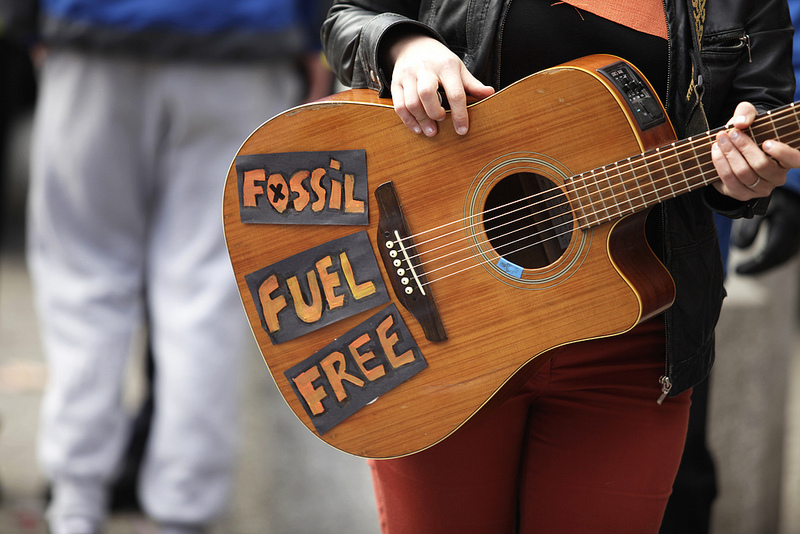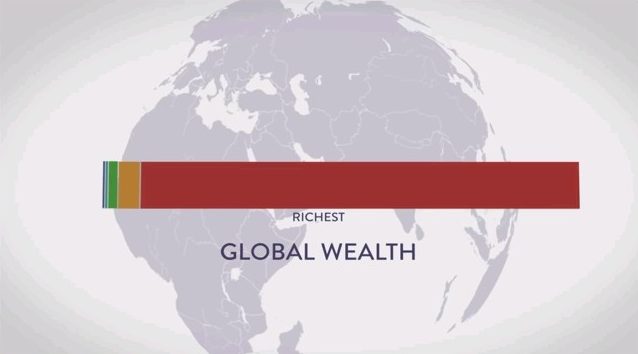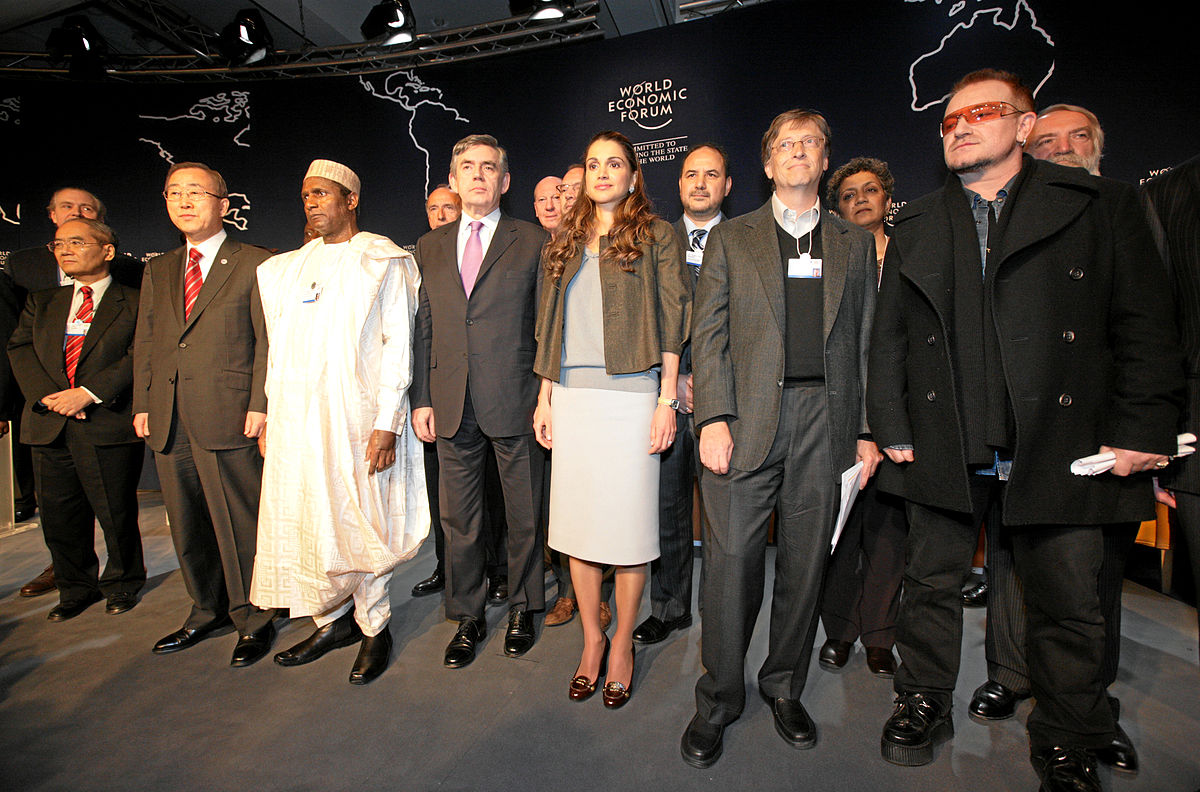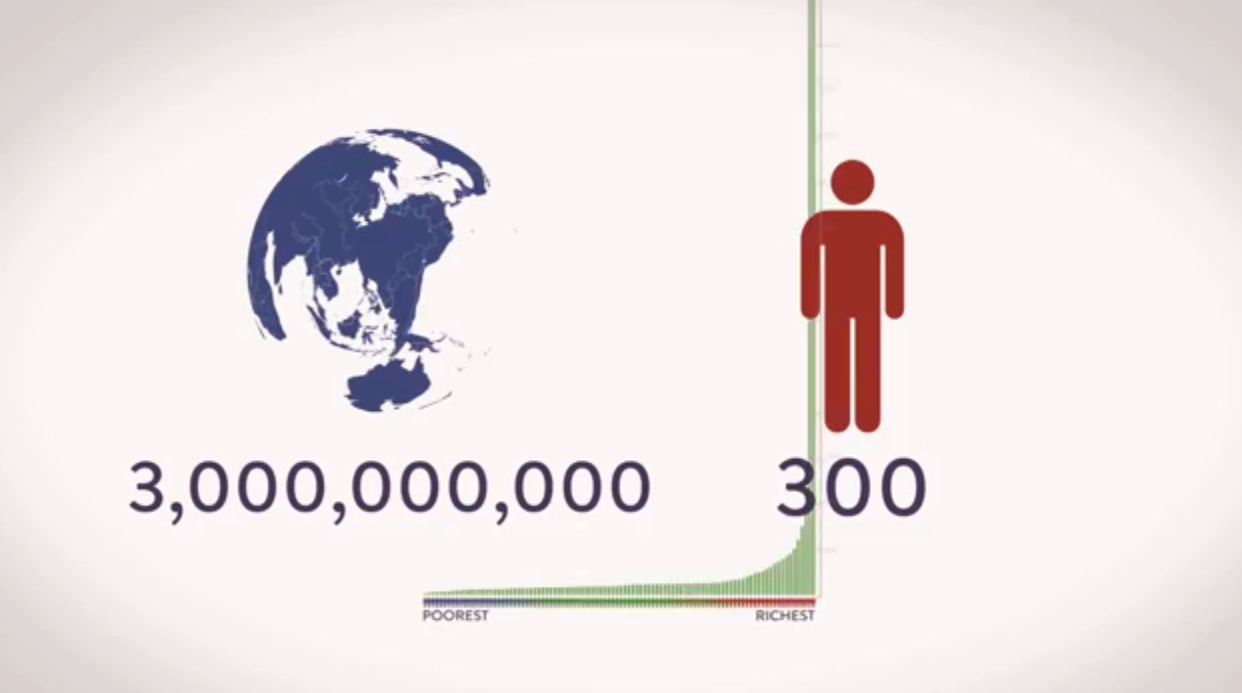
According to Kevin Anderson, deputy director of the Tyndall Centre for Climate Change Research, global subsidies to the fossil fuel industry, both indirect and direct, amounted in 2015 to $5.3 trillion dollars. Or to frame it another way, 6.5% of global GDP. Roughly $10m per minute. That’s right you read it correctly- ten million dollars per minute.
These figures are from the IMF, hardly a hotbed of radical thinking as Anderson points out. This astronomical figure includes the cost in health terms of air pollution, high coal use in China and India and, “broader externalities from vehicle use like traffic congestion and accidents”, according to the IMF report.
“Externalities” in mainstream economics meaning: the negative consequence of market transactions which have not been factored into the market price of, in this instance, fossil fuels. The unaccounted for external impact in this case is the ill health, and deaths, of millions.
In plain language, someone else picks up the bill for the actual consequences and impacts of dirty energy emissions.
Yet set this figure against the $1oo billion dollars pledged per annum, and remember only pledged, by rich developing countries at COP 21 towards adaptation and mitigation of climate change in poor countries. To put this in context, 100 billion dollar is 53 times less than is provided through subsidies to the global extractive companies by international governments.
According to a recent report by Oxfam even that paltry amount is nowhere near being adhered to. The report says that up to date only 16% of international climate finance, of the $100 billion committed, has so far been dedicated to adaptation. The contrast in priorities is stark.
The 2015 figure of $5.3 Trillion dollars is probably not much different in real economic terms than in previous years, or for 2016 for that matter. Tally those figures up since say 2009, the year of the Copenhagen Climate Accord, and at a conservative estimate give or take a few dollars, it amounts to between approximately $25 to £30 Trillion dollars.
What this amounts to is a global welfare programme for the global fossil fuel industry, and a few crumbs from the well-endowed table of neoliberalism for those who’ll be worst affected the coming ravages of global warming.
Note the astonishing irony of all of this: the industries that have primarily caused, are still causing, and will continue to cause climate change, are the recipients of huge subsidies. Whilst the marginalised, the “Unpeople” as John Pilger memorably described the wretched of the earth, are promised a paltry and relatively insignificant amount to mitigate and adapt to the consequences of something they did little or nothing to bring about.
Amongst those consequences: Arctic sea ice and land-based glaciers are melting; sea-levels are rising threatening coastal regions where most of world’s population lives; and ocean acidification is now critically disrupting aquatic ecosystems. Additionally, global warming increases both extremes of the earth’s water cycle, which will mean two things: one, more heatwaves and droughts because of a warmer atmosphere, and two, a warmer atmosphere holds more water vapour, so more extreme rainfall.
Not a bad government hand-out for the fossil fuel industry, given their primary role in all of the above.
The Sustainable Development Goals
2015, we were told, was to be a defining year for finally getting to grips with the challenges, and implicitly the failures and impacts of global economic development. In September we had the Sustainable Development Goals (SDGs) in New York, and in December in Paris, there was a global agreement, of sorts, on tackling climate change, COP 21.
The SDGs, although not without some merit, has its focus on the eradication of extreme poverty by 2030. Yet nowhere in the final text, or in the conceptual thinking underpinning the goals, is there any mention of wealth accumulation and hoarding, and conspicuous overconsumption by us in the rich world, as primary causes of the mass impoverishment of the world’s poor.
In short, the central focus is on eradicating poverty in developing countries; not on taxing wealth & income equitably, or even cutting back on our consumption levels.
Instead of this “global wish-list”, as a friend of mine who works in the development industry calls it, we should focus on and reveal the structural causes of poverty. By revealing these causes, we will reveal the global architecture that allows it to continue. Global poverty in the 21st century, just like climate change, is created and caused by economic and social systems. Neither are “acts of god”.
Take global tax havens for example. While billions are siphoned off into off-shore tax accounts by transnational subsidiaries, SDG 17.1 boldly states of the importance of supporting “… domestic resource mobilization… to improve domestic capacity for tax and other revenue collection.”
Well, oddly enough, it is actually relatively simple to achieve more revenue collection. If large corporate entities would stop profit shifting billions into off-shore subsidiaries in the world’s tax havens where they pay little or no tax, away from national treasuries in developing countries, at the industrial scale they are currently doing it at, a sizable part of poverty could be addressed. In turn, poor countries could then spend their tax revenue on health, education, sanitation, and a basic welfare net for the very poor.
This would be one way of shifting the dominant narrative on development, by refocusing at least in part on wealth instead of focusing on poverty ad nauseam as somehow a “natural” part of human existence, to be eradicated as if it was somehow an infectious disease.
In Ireland we should also refocus our development priorities, away from current practices. Take the three following examples.
In a recent study commissioned by the Washington Center for Equitable Growth, it was reported that in 2012 US multinationals “profit shifted” $100 billion in income to Ireland as a means of lowering their tax bills. All mostly legal, although obviously not ethical. Yet even a small percentage of this figure if taxed adequately, through a global financial transaction tax for instance, could build thousands of schools in poor countries.
Secondly, in 2014 at the UN, Ireland voted against the establishment of a set of principles which are designed to work towards a multilateral legal framework for sovereign debt restructuring processes. Given what we know about odious debt inflicted upon developing countries-for example, the World Bank & IMF structural adjustment policies and the onerous conditionality clauses attached to them, the removal of price controls on staple foods for instance, was it really in the best interests of the world’s poor for Ireland to oppose such a potentially progressive move?
Is it also in their best interests for Ireland to act and behave as a tax haven?
And thirdly, on the domestic front, we now have a new government ministry: bizarrely renamed the department of Communications, Climate Change and Natural Resources. That’s right, and natural resources. This is little more than cynical public relations-the ship will still head for the iceberg, there can be no deviation.
This now means that the ministry tasked to hold Ireland to its COP 21 obligations of lowering emissions is also responsible for granting offshore exploration licences for oil and gas in the seas off Ireland’s coast. The companies involved in the latest round of licensing options include ExxonMobil & British Petroleum, companies at the forefront of billions upon billions of gigatonnes of carbon emissions in recent decades. This doesn’t bode well for Ireland’s commitment to “embrace the transition to a low carbon and climate resilient future”. In a recent government paper on energy policy, it was posited that Ireland’s low-carbon energy future, “means that greenhouse gas (GHG) emissions from the energy sector will be reduced by between 80% and 95%, compared to 1990 levels, by 2050, and will fall to zero or below by 2100.” 95% in 34 years?
Richard Feynman’s famous quote, the brilliant American physicist, is appropriate to this type of magical thinking: “For a successful technology, reality must take precedence over public relations, for nature cannot be fooled.”
To return to the SDGs odd rhetorical ambiguity, goal 13 sets targets on climate change, although you’d be right in thinking logically, given our current planetary emergency, why it isn’t number one. In any event, 13.1 states that we must: “strengthen resilience and adaptive capacity to climate-related hazards and natural disasters in all countries.”
“Climate-related hazards” is an anodyne phrase and more importantly a misleading phrase. The word hazard denotes a potential risk, something with the potential to cause harm. It is not a word that accurately conveys the seriousness of what we know about the current implications of global warming. Just ask those being evacuated from wildfires in Fort McMurray in Canada or the 33o million Indians affected by soaring heat ,drought and water shortages in Maharashtra state and elsewhere. They are not suffering a hazard, they are suffering the consequences of a well forecasted, and foreseen, climate emergency. Plus, why throw in “natural disasters” into the sentence here in such an abstract and incongruous way when we know well that climate change is anything but a “natural” disaster? To obfuscate possibly?
Magical Thinking
Both the SDGs and the Paris Agreement dominate mainstream thinking on development here in Ireland and abroad. They are largely seen as the panacea, the cure which will sate our nagging fears and consciences-for the time being anyway. They have become the focus of attention and energy; and no doubt that focus and energy is well intentioned.
Finally we are told, our tell ourselves, states are at last beginning to get to grips with the global problems of poverty and economic inequality, and most importantly of all, the future consequences of climate change.
Yet nowhere in either global agreements is it mentioned that free market policies, let off the leash in an orgy of “irrational exuberance” and “animal spirits” since the 1980s, is primarily to blame for what we now see almost forty years later in 2016. Naomi Klein & Chomsky have been pointing this out for years, as have many others. The data is coming in thick and fast: huge income & wealth disparities, rapid depletion of biodiversity, and a planet heading towards well over the supposed 2c “safe limit” of global warming.
In fact, if we don’t reduce carbon energy demand and production very soon, Kevin Anderson and others are arguing that we are heading towards 3C or 4C, or even more possibly, global warming by the end of the century. If so, and it is looking likely, the repercussions will be profound. The 2c figure was always a political compromise anyhow, as is the notion of squaring the idea of sustainable growth with our current economic and industrial orthodoxy.
Anderson is critically questioning, as any good scientist should be, of the popular narrative on climate change and he is unequivocal on the implications of his findings. Essentially he is saying there is a widening gulf between “the soaring political rhetoric” and the frightening realities of rapidly escalating greenhouse gas emissions. He is flatly contradicting much of the received analyses and conclusions, and the “magical thinking” around climate change. Essentially he is saying rapid reductions in fossil fuel emissions are needed right away if we are to avoid a future few of us can really imagine.
Instead in the Paris Agreement (COP 21) we have: an “aspiration” to limit global warming to 1.5C, but with no plan to achieve it; INDCs (intended nationally determined contributions) are voluntary and “non-punitive” and aren’t even sufficient to curb a 2C rise much less a 1.5C rise; extraordinarily, aviation and shipping emissions are exempt; and perhaps most importantly of all no concrete date has been set for peak carbon emissions, never mind even zero emissions. And, in the whole 32 page text, there is not one mention of fossil fuels.
Language and words are important, ask any lawyer, and there were thousands of them at COP 21, and before, batting for governments and private interests. The written word in this context narrowly frames our understanding of the issues by deliberately setting the boundaries according to mostly hidden agendas, this in turn influences in concrete ways what the desired outcomes will eventually be. “Strategic ambiguity”, it is called.
It is not that there weren’t some successes in the Paris Agreement, rather it is given the pessimistic prognosis that science is presenting us with, COP 21 is inadequate and, moreover, “strategically” unambitious given our current predicament. Similar observations can be made about the SDGs and the “eradication” of global inequality and poverty.
The dominant development narrative is at best piecemeal and only incrementally effective, if we are to seriously face climate change-with all its terrifying tipping points and feedback loops-and global poverty, then we must urgently rewrite the narrative, and more importantly, the processes and drivers underpinning this narrative.









Leave a Comment